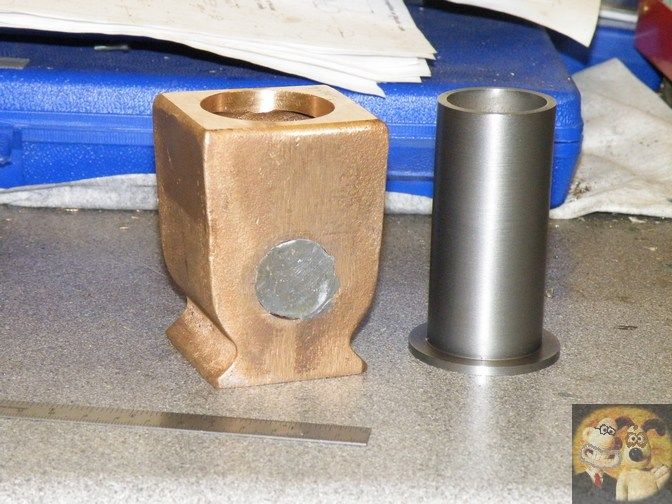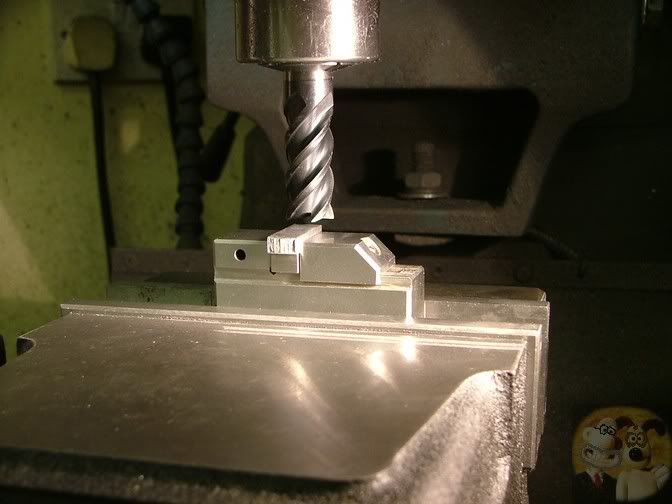For a long time I have considered building the Hubbard 2 stroke marine engine from castings available from Heinz Kornmuller http://www.classic-motors.at/modellmotoren/modelengines.htm
The fact I have not seen any build articles going all the way to completion, and also only one You Tube video all helped me resist temptation. There must have been quite a number of casting kits sold around the world; surely there must be more than one model completed?
On this forum, Ive found only 2 references to this engine:
http://www.homemodelenginemachinist.com/showthread.php?t=20591&highlight=hubbard
http://www.homemodelenginemachinist.com/showthread.php?t=20772&highlight=hubbard
Brian Rupnow rekindled my interest with his very interesting build of a 2 stroke engine based on the Hubbard. I waited until Brian had got a working model and then decided to take the plunge and spend the kids inheritance - all 191 EU - on a set of castings.
During Brians build saga, I started looking for information on the full size engine. Theres not much out there, but I did stumble on a volunteer helper at Mystic Seaport http://www.mysticseaport.org/ and he has helped me a lot with pictures of engines and answered many queries. Thank you, Nate.
The castings duly arrived and looked good and clean.

The drawings came on a CD to be printed by the user and are very well detailed in both Metric and Imperial measurements (using exact conversion), but the engine if produced to the drawings would be very basic so I am attempting to make a few embellishments to get the engine looking closer to the Real Thing.
Things that I noticed on the full size engines:
A priming cup was fitted to the cylinder head.
There is a cooling water drain on the side of the cylinder jacket.
The crankshaft was greased by external oilers one on each crankshaft housing and one in front of the flywheel for the crank pin.
The flywheel incorporates a starting handle.
There is a crankcase drain.
The cylinder oiler has 2 drip feeds, although I cant find out what the second one is for and anyway, my skills are not good enough to make this type in such a small scale.
The model carburettor bears no relationship to the original Schebler item. Looking at the construction of these in full size, there is no way to reproduce it in 1/5th scale.
As time goes on, there may be some other additions.
On measuring up, the castings have almost no machining allowance: definitely no room for error in setting up. The diameter of the cylinder jacket is undersize and the crankshaft brackets are undersize on length and diameter. It seems like the drawings are a guide to making the model and should not be trusted implicitly.
Dave
The Emerald Isle
The fact I have not seen any build articles going all the way to completion, and also only one You Tube video all helped me resist temptation. There must have been quite a number of casting kits sold around the world; surely there must be more than one model completed?
On this forum, Ive found only 2 references to this engine:
http://www.homemodelenginemachinist.com/showthread.php?t=20591&highlight=hubbard
http://www.homemodelenginemachinist.com/showthread.php?t=20772&highlight=hubbard
Brian Rupnow rekindled my interest with his very interesting build of a 2 stroke engine based on the Hubbard. I waited until Brian had got a working model and then decided to take the plunge and spend the kids inheritance - all 191 EU - on a set of castings.
During Brians build saga, I started looking for information on the full size engine. Theres not much out there, but I did stumble on a volunteer helper at Mystic Seaport http://www.mysticseaport.org/ and he has helped me a lot with pictures of engines and answered many queries. Thank you, Nate.
The castings duly arrived and looked good and clean.

The drawings came on a CD to be printed by the user and are very well detailed in both Metric and Imperial measurements (using exact conversion), but the engine if produced to the drawings would be very basic so I am attempting to make a few embellishments to get the engine looking closer to the Real Thing.
Things that I noticed on the full size engines:
A priming cup was fitted to the cylinder head.
There is a cooling water drain on the side of the cylinder jacket.
The crankshaft was greased by external oilers one on each crankshaft housing and one in front of the flywheel for the crank pin.
The flywheel incorporates a starting handle.
There is a crankcase drain.
The cylinder oiler has 2 drip feeds, although I cant find out what the second one is for and anyway, my skills are not good enough to make this type in such a small scale.
The model carburettor bears no relationship to the original Schebler item. Looking at the construction of these in full size, there is no way to reproduce it in 1/5th scale.
As time goes on, there may be some other additions.
On measuring up, the castings have almost no machining allowance: definitely no room for error in setting up. The diameter of the cylinder jacket is undersize and the crankshaft brackets are undersize on length and diameter. It seems like the drawings are a guide to making the model and should not be trusted implicitly.
Dave
The Emerald Isle







































































































